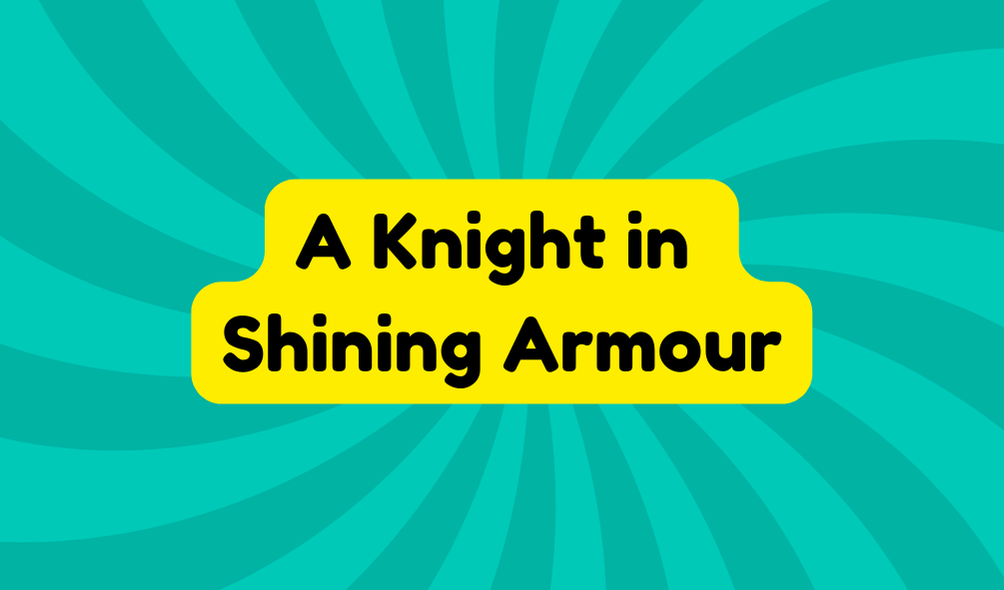The term "a knight in shining armor" refers to an idealized hero who rescues others in need, embodying qualities like bravery and nobility. Originating from medieval culture, the phrase romanticizes chivalry but can create unrealistic expectations of heroism. Though it emphasizes support and courage, these ideals may not always reflect genuine assistance or modern relationships. Understanding this term's implications is significant, as it reveals more about societal values and the complexities of human connections. Further examination uncovers even richer insights.
Synonyms
Synonyms for the phrase "a knight in shining armor" illustrate the various ways individuals may describe someone who comes to the rescue or provides noble assistance. This concept frequently portrays a heroic figure, often idealized in popular culture. However, such imagery can mask the complexity of true gallant protectors. These terms reveal both admiration and critical examination of saviors:
- White knight
- Gallant savior
- Chivalrous rescuer
- Noble champion
- Daring defender
These expressions prompt reflection on the deeper implications of heroism and societal perceptions surrounding the notion of rescuers, encouraging a nuanced understanding of modern-day gallantry.
Example of Sentences
The term "a knight in shining armor" often conjures images of heroic figures swooping in to save the day, a notion that has been firmly rooted in literature and popular culture. In various contexts, these phrases illustrate rescue scenarios and heroic actions, prompting audiences to reflect on the real meaning behind the idealized figure. Examples include:
- "With a quick assessment, he became her knight in shining armor during the crisis."
- "In the rescue scenario, her colleagues displayed heroic actions reminiscent of medieval chivalry."
- "Not all saviors wear armor; some bring courage and understanding."
- "She waited for her knight, but independence proved her best armor."
- "His timely support was her beacon in the storm."
Origin
Imagery plays a significant role in understanding the origin of the phrase "a knight in shining armor," which evokes the romantic notion of chivalrous heroes coming to the rescue. Historically, this expression emerges from a cultural context steeped in medieval ideals, where knights donned polished armor, embodying valor and noble deeds. The surge of Victorian artists and writers amplified its significance, crafting narratives of gallant rescues. Initially documented in the late 18th century, the phrase evolved from literal interpretations to a broader metaphor for assistance, reflecting societal values and the perennial allure of heroism amid a changing cultural landscape.
Collocations
Collocations relating to the phrase "a knight in shining armor" reveal the common contexts in which this expression is utilized, often highlighting its evolving nature in modern language. Understanding these collocations and their synonyms underscores their varied applications:
- heroic figures
- gallant rescues
- romantic gestures
- unwavering support
- modern chivalry
Such phrases indicate an idealistic view of assistance. However, the repetition of these collocations may reflect unrealistic expectations. Readers should consider whether the romanticized notion serves any real purpose or merely fosters dependency. Therefore, recognizing the limitations of these collocations can lead to deeper, more realistic dialogues about heroism in contemporary society.
How to Use in Everyday Language
When discussing the phrase "a knight in shining armor," it becomes essential to acknowledge how it can be woven into everyday conversations. This phrase often surfaces in modern interpretations, reflecting societal values surrounding heroism and support. Individuals may casually describe a friend or partner as a "knight" when they provide unexpected help or kindness. However, in everyday usage, it is vital to reflect on the evolving nature of the term. While romanticized, the phrase can also perpetuate unrealistic expectations regarding chivalry and heroism. Consequently, using it with discernment allows for a more nuanced understanding of human relationships in contemporary contexts.
Why Is It Still Relevant Today?
The relevance of the phrase "a knight in shining armor" in today's society can be attributed to its enduring themes of heroism and support. Modern interpretations often transform this romanticized notion into a broader metaphor for anyone who offers critical assistance during challenging times. Despite its old-fashioned roots, the cultural significance of this phrase persists as people yearn for figures who exemplify courage and compassion. However, it is essential to recognize that not all heroes wear shining armor; often, they emerge from unexpected places. This duality invites skepticism, challenging individuals to assess the true nature of support in contemporary life.







